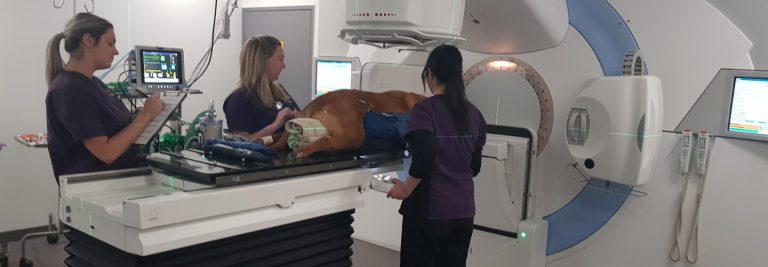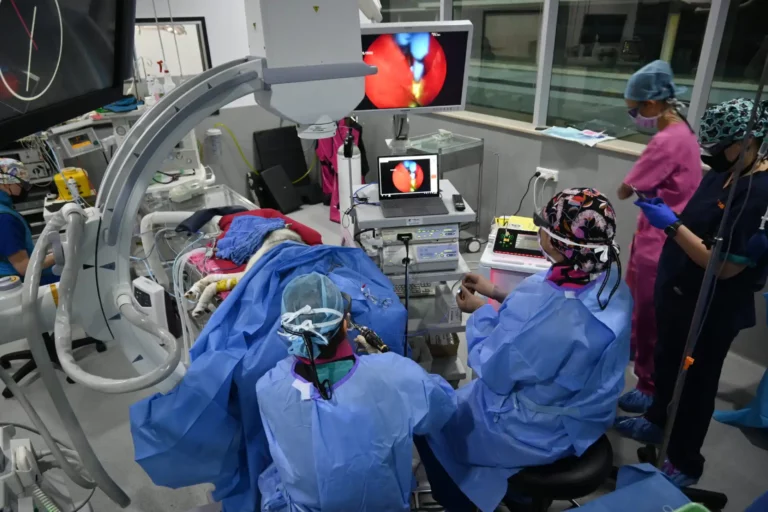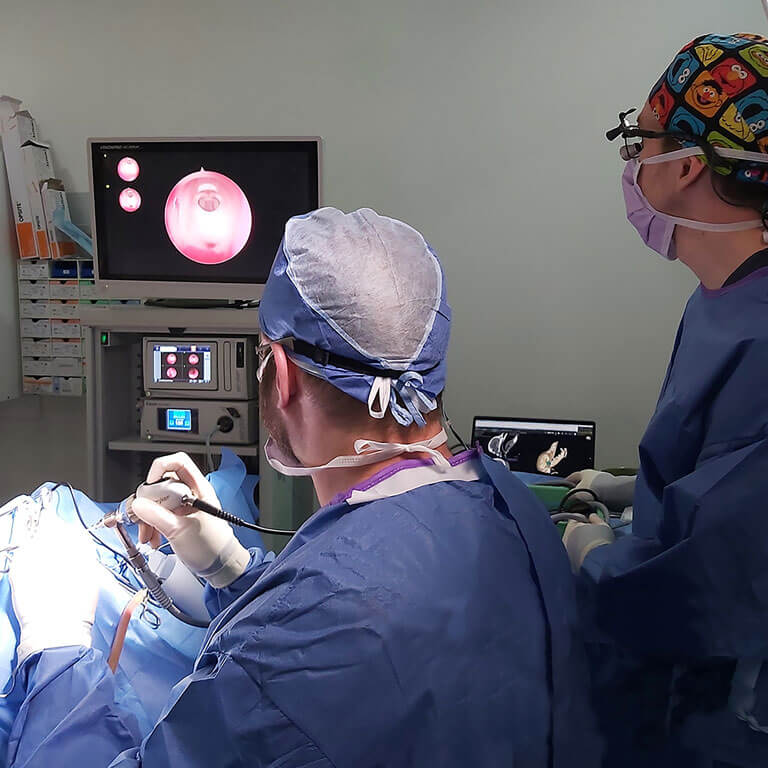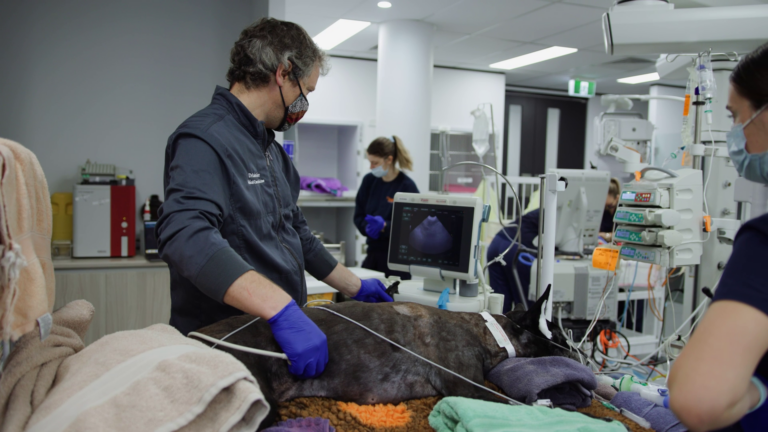Reviewed by Dr Tristram Bennett, Specialist in Surgery
Laryngeal paralysis, a condition affecting the larynx or voice box, is not uncommon in dogs. This condition can significantly impact a dog’s breathing, leading to various health complications. This article will summarise its causes, treatment options, and potential outcomes.
What is Laryngeal Paralysis in Dogs?
Laryngeal paralysis occurs when the muscles responsible for opening the larynx fail to function properly. This results in partial or complete obstruction of the airway, making breathing difficult for affected dogs. When healthy, the larynx should open wide during inhalation and close tightly during swallowing to prevent food or liquid from entering the trachea or windpipe. However, in dogs with laryngeal paralysis, this process is disrupted, leading to respiratory distress and other related symptoms.
What Causes Laryngeal Paralysis in Dogs?
Several factors can contribute to laryngeal paralysis in dogs. One cause is the degeneration of nerves that control the muscles around the larynx. Nerve degeneration can occur due to genetics, trauma, or underlying medical conditions such as hypothyroidism or certain neurological disorders. Some breeds, such as Labrador retrievers, golden retrievers, and Saint Bernards, are particularly predisposed to this condition.
What are the Symptoms of Laryngeal Paralysis in Dogs?
Laryngeal paralysis in dogs can cause a number of different symptoms, depending on severity of the condition. These which include:
- Changes in bark – a hoarse, raspy, or strained bark
- Difficulty breathing – particularly during exertion or when they’re excited
- Changes to breathing sounds such as wheezing, snoring, or snorting
- Persistent coughing
- Gagging or retching, particularly when eating or drinking
- Exercise Intolerance and tiring easily
- Heat intolerance causing susceptibility to heat exhaustion or heatstroke.
- Blue tinge to gums or tongue due to poor oxygenation in extreme cases
- Collapse or fainting – cause by inadequate supply of oxygen to the brain.
How to Treat Laryngeal Paralysis in Dogs?
Treatment options for laryngeal paralysis depend on the severity of the condition and the overall health of the dog. In mild cases where symptoms are manageable, conservative management techniques may be sufficient for a good quality of life. These techniques often involve weight management, avoiding excessive heat or humidity, and reducing stress on the dog’s airway.
In more severe cases or when the condition worsens over time, surgical intervention may be necessary. The most common surgical procedure for laryngeal paralysis in dogs is a technique called laryngeal tie-back surgery. During this procedure, the surgeon permanently opens one side of the larynx to alleviate airway obstruction and improve breathing.
Side Effects of Surgery for Laryngeal Paralysis in Dogs
While laryngeal tie-back surgery can significantly improve a dog’s quality of life, it is not without risks. One potential complication is aspiration pneumonia, where food, water, or saliva may enter the lungs due to the altered anatomy of the larynx. This complication can be serious and may require additional treatment such as antibiotics and supportive care.
Additionally, some dogs may experience voice changes following surgery, as the procedure alters the function of the larynx. This can manifest as a softer or hoarser bark, which may or may not resolve over time. The surgeon will discuss these, and other considerations in more detail before surgery to help you make the most informed decision.
Outcomes of Surgery for Laryngeal Paralysis in Dogs
Despite the potential risks, laryngeal tie-back surgery generally has excellent results with significant benefits for many dogs with laryngeal paralysis. Following a successful procedure, dogs experience much improved breathing, reduced respiratory distress, can engage in physical activities more comfortably, and enjoy a better quality of life.
It’s important to note that outcomes can vary depending on various factors, including the dog’s age, overall health, the presence of any concurrent medical conditions, and the quality of vet care (e.g. skill of the surgical and supporting team, and post-operative care provided). Some dogs may require additional support or rehabilitation following surgery to fully recover and adjust to the changes in their airway anatomy.
For a case study about laryngeal paralysis in dogs from an owner’s perspective please visit RecipeTin Eats by Nagi about Dozer the golden retriever:
Choosing SASH for treating laryngeal paralysis in dogs
SASH is a multidisciplinary hospital network with a focus on teamwork. For the best possible outcome, patients are be managed by a team of specialist veterinarians working together. Should your dog require treatment for laryngeal paralysis, SASH can offer a combination of services found in few other hospitals in Australia:
- Diagnostics, long-term management, and conservative management from a Specialist in Internal Medicine
- Anaesthesia overseen by a Specialist in Anaesthesia
- Surgical procedure utilising the most modern techniques overseen by a Specialist in Surgery
- 24/7 vet and nursing care, including state-of-the-art Intensive Care Units overseen by a Specialist in Critical Care
- Improved return to normal life with rehabilitation from Specialists in Sports Medicine and Physiotherapists
If you would like more information about laryngeal paralysis in dogs, please consult your local veterinarian or contact SASH.




